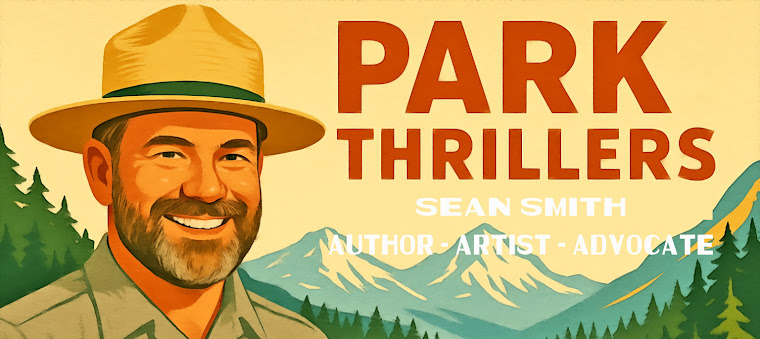 |
| Mount Rainier ~ NPS |
thousands of visitors annually. However, beneath its serene snow-capped peaks lies a dormant threat that could pose significant danger to surrounding communities. Recent studies and increased monitoring have heightened awareness of Mount Rainier's potential for volcanic activity, specifically the risk of lahars—devastating volcanic mudflows that could impact nearby towns and cities.
The Lahar Threat
A lahar is a mixture of volcanic ash, rock, and water that flows down the slopes of a volcano, often with the speed and force of a concrete-laden river. Mount Rainier is particularly prone to lahars due to its large volume of ice and snow, which could rapidly melt during an eruption or even due to geothermal activity.
The CNN article from June 23, 2024, highlights Mount Rainier's extensive history of lahars, with some flows reaching as far as the Puget Sound lowlands. The Osceola Mudflow, which occurred around 5,600 years ago, is a prime example of traveling over 50 miles from the volcano and reshaping the landscape.
Preparing for the Worst
Given the potential for disaster, communities around Mount Rainier must have robust preparedness plans. Here are some steps that residents and local authorities can take:
- Early Warning Systems: Implementing and maintaining early warning systems that detect volcanic activity and potential lahars is vital. These systems can provide critical time for evacuations.
- Evacuation Plans: Communities should develop and regularly update evacuation plans. Knowing the quickest routes to safety and having designated shelters can save lives.
- Public Education: Continuous public education campaigns can help residents understand the risks and how to respond to an emergency. Schools, workplaces, and local organizations should all participate in these efforts.
- Infrastructure Resilience: Strengthening infrastructure to withstand the impacts of lahars, such as reinforcing bridges and roads, can mitigate damage and ensure quicker recovery.
- Community Drills: Regular community drills can ensure everyone knows their role and the actions to take when a real event occurs.
Natural Disasters in Other National Parks
Mount Rainier is not the only national park with potential natural disasters that could impact surrounding communities. Here are some other examples:
Yellowstone National Park: Supervolcano Eruption
Yellowstone is home to one of the largest active volcanic systems in the world. Though rare, an eruption of the Yellowstone supervolcano could have catastrophic consequences, including widespread ash fallout, climate impacts, and disruptions to agriculture and transportation.
Preparation Tips:
- Implement extensive monitoring and research.
- Develop cross-state emergency response plans.
- Educate the public on the signs of an impending eruption and the necessary actions.
Yosemite National Park: Wildfires
Like many California parks, Yosemite is threatened by wildfires. These fires can rapidly spread, endangering lives, property, and natural resources.
Preparation Tips:
- Establish and maintain clear evacuation routes.
- Conduct controlled burns and forest management to reduce fuel loads.
- Equip communities with fire suppression tools and training.
Great Smoky Mountains National Park: Flooding
This park is prone to heavy rainfall and flash flooding, which can quickly become dangerous for nearby communities.
Preparation Tips:
- Improve flood warning systems.
- Enhance watershed management to reduce flood risk.
- Construct flood defenses such as levees and retention basins.
Conclusion
While the beauty and grandeur of national parks like Mount Rainier draw millions of visitors, it's essential to recognize and prepare for the natural threats they pose. Through early warning systems, robust planning, public education, and infrastructure resilience, communities can mitigate the risks and protect themselves from potential disasters. Awareness and preparedness are the keys to living safely in the shadow of these magnificent yet powerful natural wonders.


No comments:
Post a Comment